Pure Sine Wave Inverter vs. Modified Sine Wave Models
Updated:

The main difference between pure sine wave inverter vs. modified sine models is that the pure sine wave inverter outputs closely resemble AC mains power and are suitable for all applications. A modified sine wave model is choppy, less stable, and only suitable for more robust devices.
The power from any 120-volt AC mains outlet cycles smoothly from a 0-volt point to a positive 120 volts peak, back through the 0-volt point to anegative1 120 volts peak. This cycle occurs in a smooth, very regular undulating sine wave pattern.
Pure sine wave inverters feature sophisticated electronics that produce an AC output that closely mimics an AC mains waveform. This makes them ideal choices for applications where devices that are very sensitive to input voltage quality are used. These include high-end tech devices and medical support equipment like CPAP machines and cardiac monitors.
On the other hand, modified sine wave inverters produce a less refined, choppier output. Although this is not close to AC waveforms, these inverters’ outputs are well suited to less sensitive devices such as power tools, fans, and domestic appliances. In addition, they are generally cheaper than pure sine wave models making them ideal for applicable budget installations.
That said, the devices used on a modified wave inverter will have to work harder to reach their full potential. That means they will use more valuable battery power, run hotter, and wear out quicker. This is especially relevant to anything that uses an AC motor.
At the end of the day, you have to carefully assess your needs and decide whether a pure sine wave or modified sine wave inverter would be best. Let’s consider this in more detail.
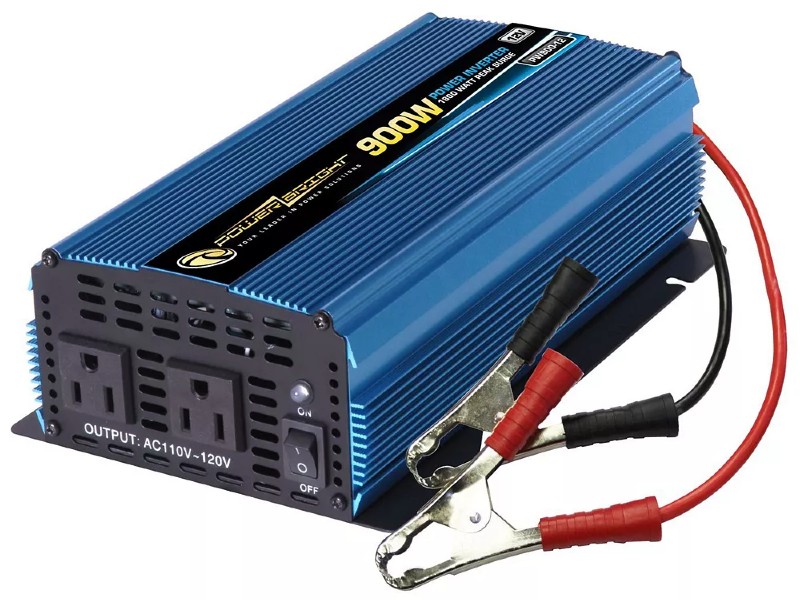 What Is an Inverter?
What Is an Inverter?
Inverters are electronic devices used to convert DC voltage from a battery or a vehicle alternator to an AC mains voltage. They are one of the most common components of generators and solar power systems where they convert the solar panel’s stored charge in the batteries to usable AC power.
What Are the Differences Between Pure Wave and Modified Wave Inverters?
AC vs. DC Voltage
When you plug an appliance into a mains outlet in your home, you utilize AC (alternating current) power. If you were to hook an oscilloscope up to that outlet, you’d see a trace that looks something like the first example A in the illustration below.
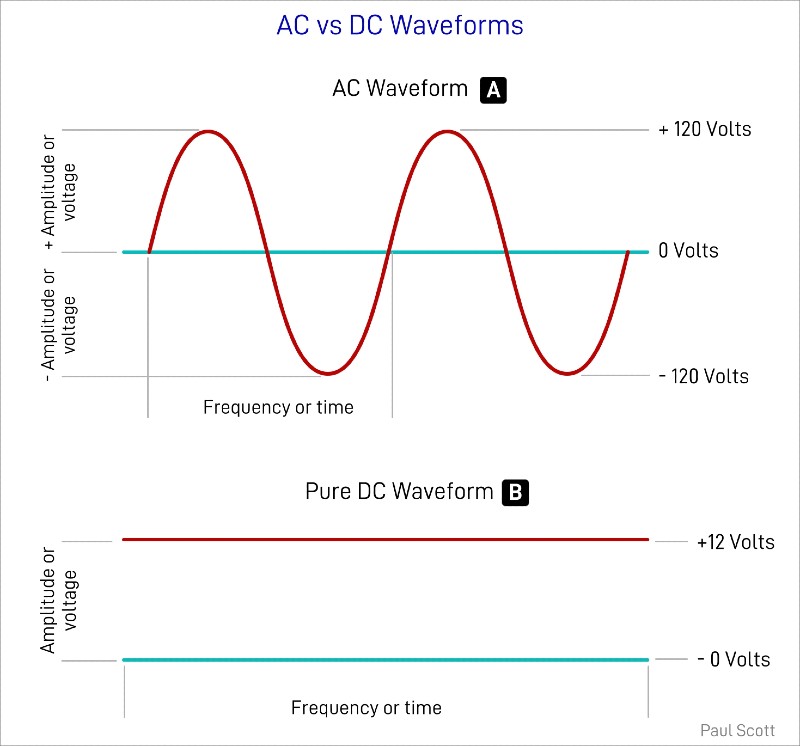
The AC “alternates” between a full deflection 120-volt positive output and a corresponding 120-volt negative output. Halfway through the cycle, the voltage passes through the 0-volt threshold giving the output its characteristic sine-like appearance. Pure AC is smooth and stable with no interruptions or abrupt voltage changes.
As illustrated in example B above, the DC (direct current) you would draw from a battery features a flat trace with constant positive and negative (0) voltage points.
Pure Sine Wave vs. Modified Sine Wave Inverter Outputs
Pure Sine Wave Inverters
True sine wave inverters are constructed with sophisticated electronics producing an output that matches an AC mains sine waveform. For an example, see the illustration below in comparison to the image above.
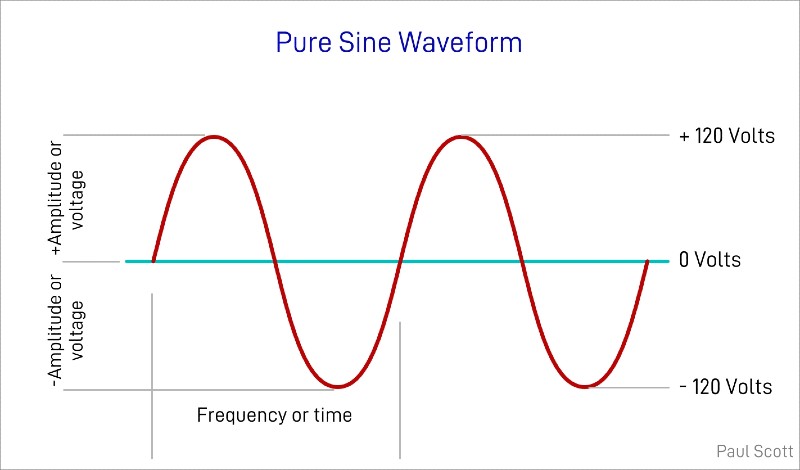
The output from a refined sine wave power inverter is very stable and includes none of the voltage irregularities common to modified sine wave types. This “pure” AC output is well suited to sensitive devices exclusively designed for use on conventional mains power grids.
This may seem arbitrary but consider this. If you have family members reliant on sophisticated medical apparatus such as respiratory or cardiac support equipment, the difference could spell the difference between life and death. And that is very important if you have chosen to go off-grid with your solar power system.
Modified Sine Wave Inverters
A modified sine wave inverter also produces an AC output, but that output is quite different from the smooth waveform mentioned above. Older, less advanced devices produced a basic square wave output, as illustrated below.
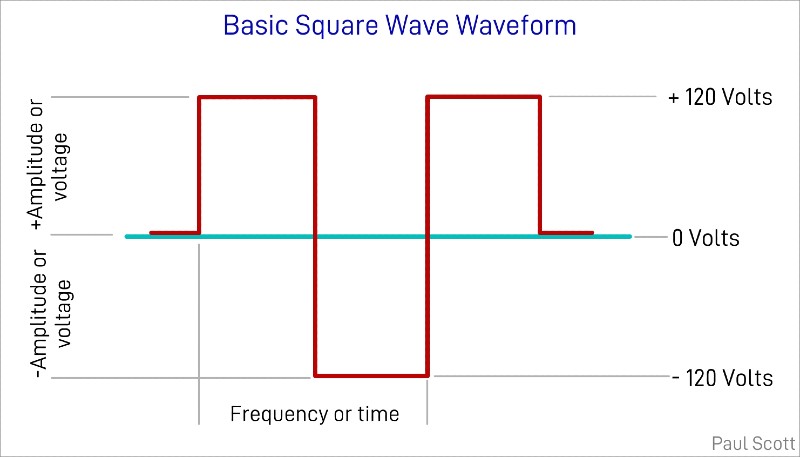
More sophisticated, modern modified sine wave power inverter outputs resemble a sine wave more closely. They feature a waveform that gradually transitions from the peaks to the 0-volt points.
They still have a choppy, stair-step pattern as they reverse polarity, though but with less abrupt voltage changes between the positive peak to 0 volts and then back again. This is what they look like.
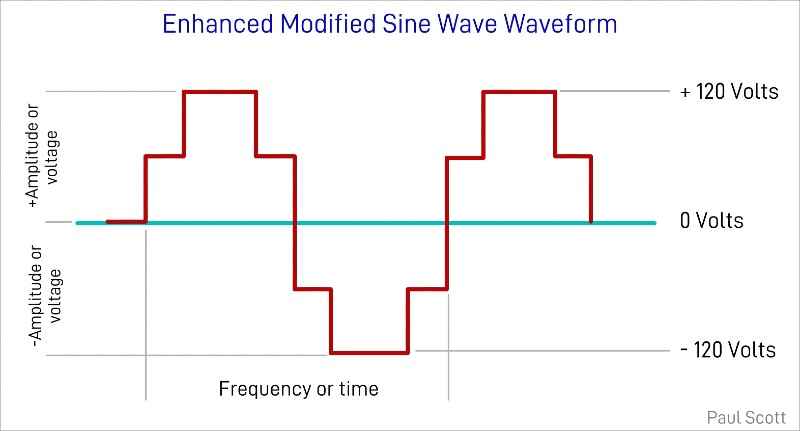
A result of these abrupt changes is a phenomenon known as total harmonic distortion (THD). This creates what is sometimes referred to as a “dirty” AC inverter output.
Although this won’t cause less sensitive equipment and appliance problems, it may damage or eventually destroy sophisticated electronic devices.
The Pros and Cons of Modified vs. Pure Sine Wave Inverters
Pure Sine Wave Inverters
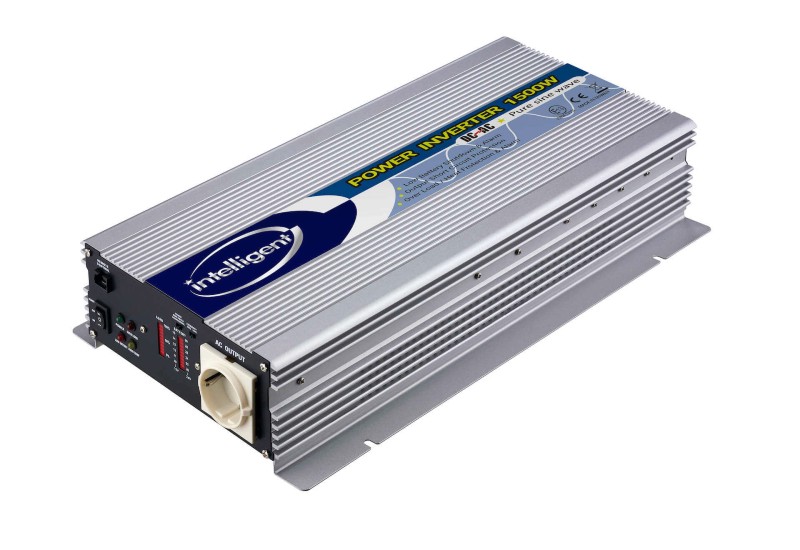 Pros
Pros
- The high-fidelity AC output from pure wave inverters is suitable for almost all AC equipment, including susceptible devices and medical equipment.
- The inverter and the appliances running from it are quieter with none of the hum of modified sine wave power inverter types.
- They are more efficient. For example, equipment with AC motors may draw up to 20 percent less power, run cooler, and last longer with this type of inverter.
Cons
- High cost. On average, a pure sine wave inverter costs between 30 and 70 percent more than a similar modified sine wave inverter example.
Modified Sine Wave Inverters
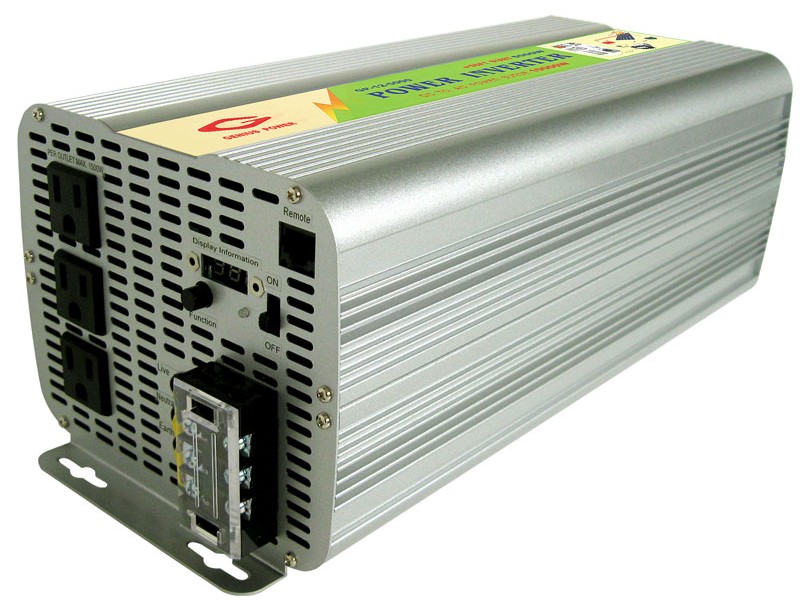 Pros
Pros
- Lower initial cost. As mentioned earlier, a modified sine wave inverter can cost up to 70 percent less than true sine wave types.
Cons
- Premature wear of equipment. Most AC equipment will work harder and run hotter on a modified sine wave output. Their service life will certainly be reduced if they are run constantly on the inverter output.
- Lowered efficiency. When used on a modified wave inverter, some appliances and devices such as fluorescent lights, computers, and TVs can show marked performance issues.
- Noise. Appliances run from modified sine wave inverters often make a humming noise due to the harmonic distortion in the output. This is particularly true of RV refrigerator compressors, RV air conditioners, and fluorescent lighting.
- No-no for sensitive equipment. The biggest con for these power inverter types is that sensitive electronics cannot be used on a modified sine wave output.
What Can Be Run On Each Type?
You’re golden if your home, boat, or RV solar system features a pure sine inverter. You can use anything you would on a conventional AC mains grid, even medical life support devices.
On the other hand, if you use a modified sine wave power inverter, you’ll have to be very selective about what you run from it and how long you run it for. And you will definitely not be able to power Uncle Fester’s heart monitor with it. Unless, of course, you didn’t like Uncle Fester!
Seriously though, the truth of the matter is this. Outside of sensitive medical and high-tech devices, you can run many things you would with the pure wave inverter. However, and it’s big. However, they won’t run as efficiently. They will run hot, noisy, and wear faster. That is particularly true of equipment that includes AC induction motors. On top of that, you’ll deplete your batteries far quicker and more than likely have to increase component and wiring ratings.
As an aside, DIY solar utility generators used occasionally to run power tools and heavier equipment may benefit from the inclusion of a modified waveform inverter.
As a basic rule, do NOT run the following items with a modified sine wave inverter.
- Medical equipment such as oxygen concentrators, CPAP machines, and cardiac monitors
- Humidifiers
- The latest generation TVs
- Sensitive thyristor-based electronics such as laser printers and photocopiers
- Any device that has an electronic timer or digital clock in it
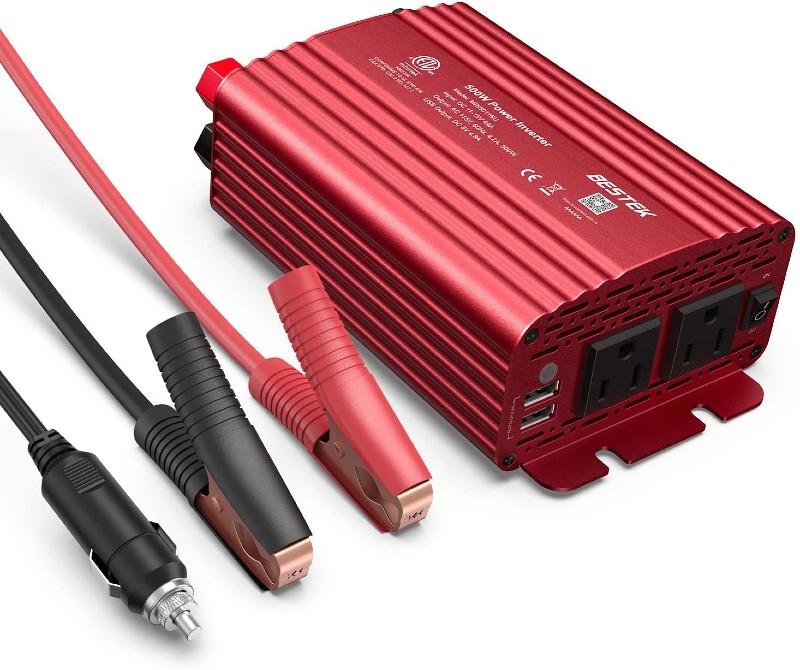 The Pure Sine Wave vs. Modified Sine Wave Takeaway
The Pure Sine Wave vs. Modified Sine Wave Takeaway
Modified sine wave models have received a lot of bad press vs. the pure sine wave inverter sales propaganda. They are not suitable for every power inverter application, but they’re not all bad. If you are sensible about what you run from them, the modified wave power inverter definitely has a place in the solar marketplace.
Pure sine wave inverters are king, though. They may be more expensive, but the benefits they offer amply offset the financial impact. If you possibly can, go for a pure sine power inverter — you have absolutely nothing to lose.










